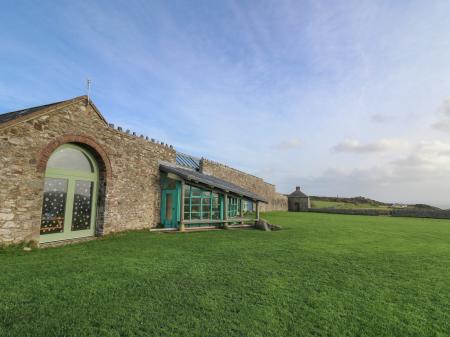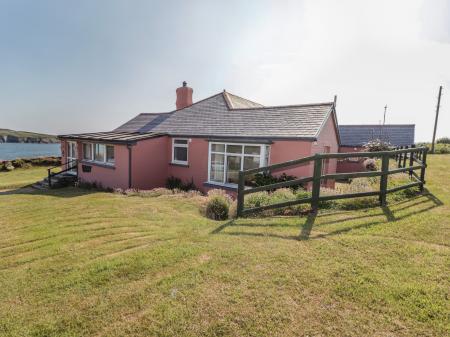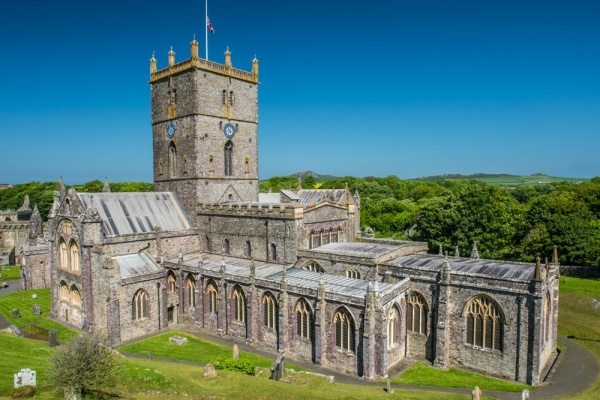
The cathedral lies low on a terrace of land beneath the crest of a hill on which the surrounding city is built (it seems frankly absurd to call the lovely, picturesque village a city, but since this is a cathedral then technically St Davids is a city). From the centre of St Davids the cathedral seems to appear from below ground, its tower poking up like the stalk of a flower poking its nose above the earth.
History
Here, on the top of the westernmost peninsula of mainland Wales, the Welsh saint Dewi, or David to give him his English name, established a monastery and served as Bishop of Menevia from the late 6th century until his death in AD 601. David's foundation became an important centre for training missionaries for work in Ireland. One of those missionaries was St Patrick, who set off for Ireland from nearby Whitesands Bay.
Over the next 4 centuries the monastery was sacked by Norse raiders at least 10 times. Life was never dull for the monks!
The cathedral we see today is thought to be the 4th to stand on the site of David's original monastery. When south Wales fell under the control of the Normans in the 11th and 12th centuries the new Norman bishops began a concerted program of rebuilding the earlier Welsh monastery.
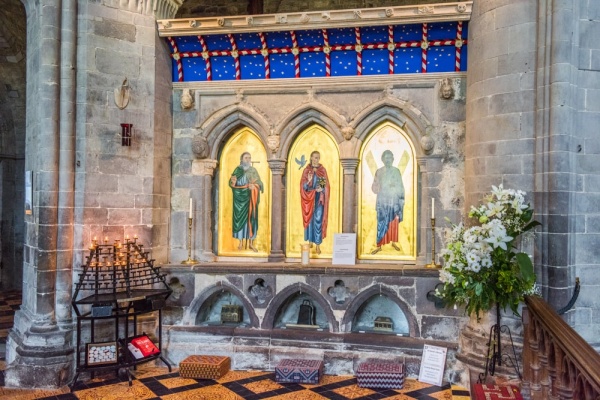
The third Norman bishop was Peter de Leia, who began rebuilding the nave and west end of the church around 1180. He also began a tower, but that fell down in the 13th century, damaging the choir and transepts. The current tower is 14th century at the lowest stage, but was raised to its current height in the early 15th century.
Architecture
The Norman architects had trouble with the swampy ground, and even today you can see the nave pillars leaning at an alarming degree both outwards and at an angle. One of the most striking features of the interior is not the drunken pillars, but the lovely colour of the nave, built of beautiful rose-coloured sandstone.
The style is firmly Romanesque, with rounded pillars and massed shapes. Even so, you can see the beginnings of the Gothic transition to pointed arches and wide spans. It seems possible that the same masons who worked at Wells Cathedral also worked here at St David's, for there are huge similarities in the styles of both buildings.
The ceiling over the nave is a later addition, begun in 1472 and carved in wonderful detail from Irish oak. Near the high altar is a memorial to Edmund Tudor, the father of Henry VII. It originally stood in the monastery of Carmarthen, but when Henry VIII dissolved the monasteries he had his grandfather's tomb moved to St David's Cathedral.
To the left of the Tudor memorial is the shrine of St David, and on the great stone screens flanking the altar steps are mortuary chests holding the bones of early Welsh saints.
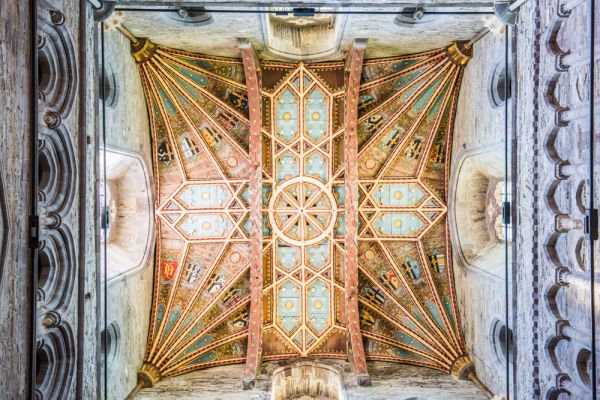
Sacred Bones
Behind the choir is the Lady Chapel and retrochoir. This area was heavily damaged in the Reformation and subsequently restored by Gilbert Scott in the Victorian period. One of the most interesting features of the east end is the Holy Trinity chapel, built by Bishop Vaughan from 1509-1522. This delightful chapel is a wonderful example of Perpendicular architecture, with marvellous fan tracery.
In the east wall of the chapel is a small recess containing a casket. The casket is said to house the relics of St David and St Justinian. The bones were discovered during Scott's restoration work. Positive identification of the bones is impossible, but one of the skeletons discovered by Scott was that of a large man, and since David was said to be a very big man, it seemed reasonable to assume that here were the bones of St David himself.
St Caradoc's Shrine
In the north transept is the shrine of St Caradoc, or Caradog in the original Welsh. Caradoc was an 11th century native of Brecknockshire, a noble at the court of Prince Rees. The story goes that one day Prince Rees, or Rhys, threatened Caradoc's life in a fury over the loss of two hunting dogs. Caradoc realised in that moment the emptiness of worldly honours, and entered the church at Llandaff.He lived as a hermit in Glamorgan before retiring with followers to the Isle of Ary. He and his devotees were captured by pirates, but released the next day because the pirates feared divine retribution. He was forced into exile when Henry I invaded south Wales, and lived for a time in St Ismael's cell in Haroldston where he died around AD 1124.
Other notable tombs - and there are many - include that of Rhys ap Gruffydd (Lord Rhys), and Geraldus Cambrensis (Gerald of Wales) the 13th century monk whose accounts of his travels through Wales remain one of our best records of medieval Wales to this day.
Immediately beside the cathedral are the sizeable remains of the 14th century Bishop's Palace, built by Bishop Gower around 1340 and one of the most impressive examples of a medieval ecclesiastical palace in Britain.
Visiting
St David's Cathedral is a delight. The village - really, it is so small that you can't think of it as a city - is wonderful, and the setting is superb. History seems to cling to every stone, and the combination of the cathedral and bishop's palace makes this an unforgettable place to visit. Don't miss St Non's Holy Well, just outside the village (city!). Non, or Nona, was St David's mother, and there is a ruined chapel near an ancient stone wellhead in the middle of a field overlooking the rocky coastline, just a short walk from the centre of St Davids. There is a pay and display parking area very close to the Bishop's Palace and Cathedral on Pit Street.
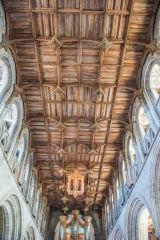
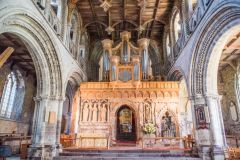
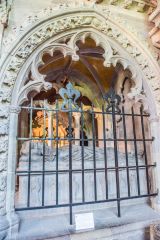
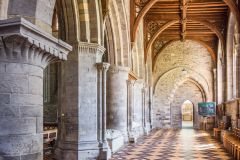
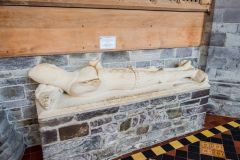
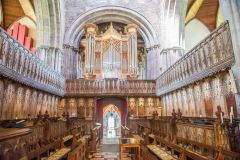
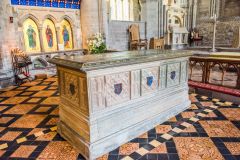
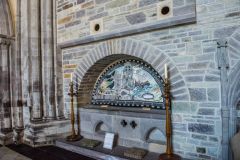
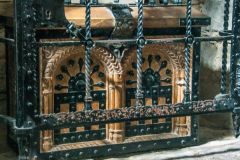
 We've 'tagged' this attraction information to help you find related historic attractions and learn more about major time periods mentioned.
We've 'tagged' this attraction information to help you find related historic attractions and learn more about major time periods mentioned.
